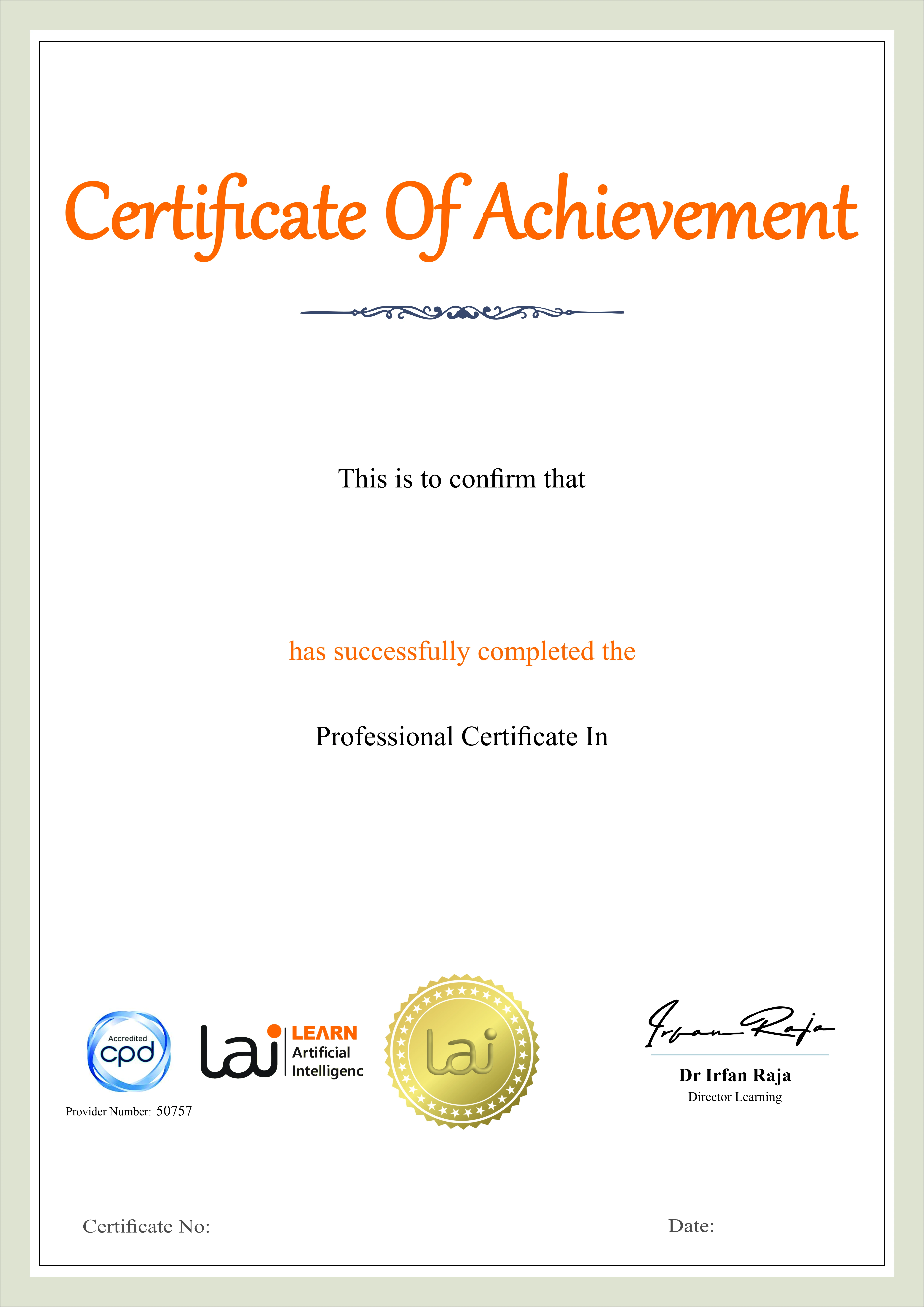The Using AutoML Tools course is designed to help learners explore the potential of automated machine learning in accelerating the development of machine learning models.
Using AutoML Tools
The Using AutoML Tools course is designed to help learners explore the potential of automated machine learning in accelerating the development of machine learning models. In this course, we define AutoML as the automation of the entire machine learning process—from data preparation and feature selection to model training and evaluation. AutoML simplifies the traditionally complex and time-consuming tasks of building machine learning models, making it accessible to both beginners and experienced professionals.
Through practical, hands-on learning, the course guides you in using AutoML tools to prototype models quickly and efficiently. You'll work through the stages of data preprocessing, model selection, hyperparameter optimization, and deployment—all with minimal manual coding. By the end of the course, you’ll not only understand how to define AutoML, but also how to integrate it into your own machine learning workflows to save time, boost productivity, and build high-performing models with ease.
This course is designed for a wide range of learners, including data scientists, machine learning engineers, software developers, and business professionals interested in the rapid prototyping of machine learning models. If you're looking to speed up your machine learning model development process, AutoML offers an accessible way to do so. Whether you are a beginner with little experience in machine learning or an experienced professional looking to streamline your workflows, this course provides valuable insights into how AutoML platforms can optimize and simplify the machine learning process. Familiarity with programming, particularly in Python, is beneficial but not required, as the course will guide you through using AutoML tools effectively.
Define AutoML and understand its role in simplifying and automating the machine learning process.
Get hands-on experience with AutoML platforms and use them to rapidly prototype machine learning models.
Perform data preprocessing tasks, such as data cleaning, transformation, and feature engineering, using AutoML tools.
Build and train machine learning models using AutoML platforms with minimal coding.
Optimize hyperparameters and tune models for better performance using AutoML tools.
Evaluate model performance using various validation techniques and understand how to interpret results.
Deploy and integrate models into real-world applications for production use.
Explore domain-specific applications of AutoML for fields like healthcare, finance, and e-commerce.
-
This module provides a comprehensive introduction to AutoML, including its history, evolution, and key components. You'll understand how AutoML fits into the machine learning lifecycle and why it’s becoming essential for faster and more efficient model development.
-
Explore the different AutoML platforms available today, such as Google Cloud AutoML, H2O.ai, and Azure AutoML. You will learn about their core features, user interfaces, and how to choose the right platform for different use cases.
-
Data preprocessing is a crucial part of any machine learning workflow. In this module, you will learn how to use AutoML tools for tasks like data cleaning, normalization, feature extraction, and feature engineering to prepare data for modelling.
-
This module focuses on the hands-on application of AutoML platforms to build and train machine learning models. You will explore how to use AutoML to automatically select algorithms, create models, and evaluate them for accuracy and performance.
-
Learn the importance of hyperparameters in machine learning models and how AutoML tools help automate hyperparameter tuning to enhance model performance. This module also covers techniques such as grid search, random search, and Bayesian optimization for efficient hyperparameter optimization.
-
After building your models, it’s essential to validate their performance. This module covers various evaluation techniques available in AutoML platforms, such as cross-validation, confusion matrix, and ROC curves, to help you assess model accuracy and generalization.
-
Learn how to deploy your models created through AutoML platforms into real-world applications. This module includes discussions on deployment best practices, integrating models with external applications, and scaling models for production environments.
-
In this final module, you will explore specialized applications of AutoML for different domains, such as healthcare, finance, and retail. You will understand how to tailor AutoML solutions to meet industry-specific requirements and challenges.
Earn a Professional Certificate
Earn a certificate of completion issued by Learn Artificial Intelligence (LAI), accredited by the CPD Standards Office and recognised for supporting personal and professional development.

Key Aspects of Course

CPD Accredited
Earn CPD points to enhance your profile

Free Course
This course is free to study

Self-Paced
No time limits or deadlines

Flexible & 24/7 Access
Learn anytime , anywhere

Build in demand job skills
Get job ready

Updated AI Skills
Stay current with AI advancement

Global Learning
Accessible Worldwide

Premium Materials
High-quality resources

Employer Approved
Boost your career prospects



